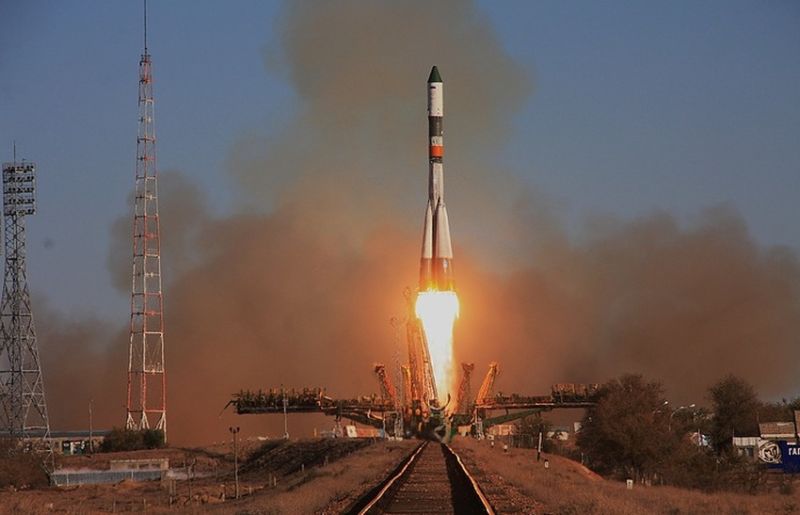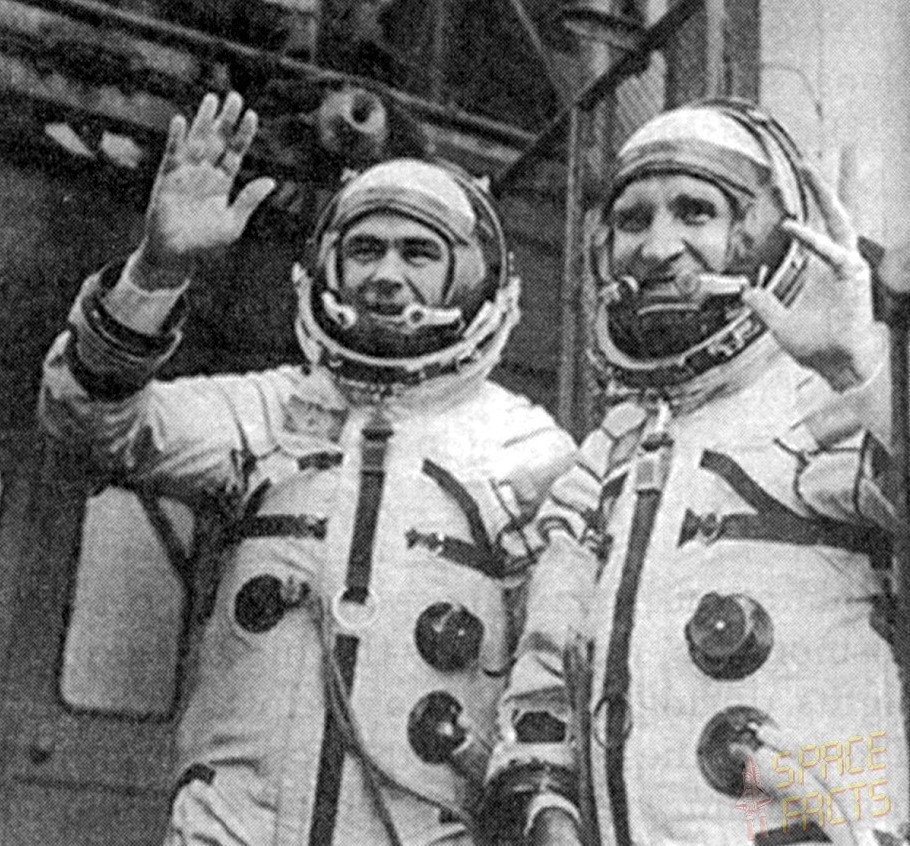
On December 1 a Soyuz rocket carrying an uncrewed Progress spacecraft laden with 2.6 tons of food, fuel, and other supplies lifted off from the Baikonur cosmodrome in Kazakhstan. Following a normal launch, first-, and second-stage firings, things started to go wrong for Progress MS-04 at about six minutes into the flight.
The details are a bit sketchy, but according to Russian space journalist Anatoly Zak, the third stage was supposed to fire from five minutes after launch until almost nine minutes into the ascent. Instead of a nominal ride to orbit, however, mission controllers lost telemetry from the vehicle at about six minutes, and there was no confirmation of the Progress spacecraft separating from the rocket's third stage. Around that time, a large explosion was observed in the sky over the Tuva Region of Russia, a remote area of southern Siberia, followed by reports of falling debris. Tanks and other debris associated with the rocket and spacecraft were later found on the ground.
The Progress spacecraft launched on an older Soyuz-U rocket, which is being phased out. Crewed launches now take place on a more modern Soyuz-FG rocket, but the two rockets share a common third stage. So it is conceivable that such an incident could occur with a human launch. Had this happened last week, would the crew have survived? The answer is maybe—with some luck.
This accident
Roscosmos and NASA have not been forthcoming about the details of last week's "anomaly." However, two sources Ars spoke to said a preliminary investigation indicated a problem with the Soyuz rocket's third stage engine, the kerosene-fueled RD-0110. (A similar problem occurred with the launch failure of Progress 44P in August, 2011). This time, at 383 seconds into the flight, there appears to have been some sort of explosion at an altitude of about 180km above Earth.
Absent more concrete information, it is unclear whether a crewed Soyuz spacecraft would have survived this explosion, but if they did the crew would have had a fighting chance. As veteran space journalist and former NASA flight controller James Oberg told Ars, "They have abort modes all the way up." This means the spacecraft has pre-programmed contingencies to come back to Earth at almost any point in the ascent to orbit. However the crew would probably have little control of where they landed once back.
Moreover, it's estimated by engineers familiar with this accident that astronauts would have pulled about 20 Gs during the reentry into Earth's atmosphere. Prior to launch, Soyuz crews train in a large centrifuge at Star City, outside of Moscow, at loads of up to 8 or 9 Gs. However human tests have shown that pilots are capable of sustaining significantly higher G-loads over a short period of time.
Historical analog
Such an incident has happened before, with a flight known as Soyuz 18A. On April 5, 1975, a Soyuz spacecraft launched from Baikonur on a Soyuz rocket, carrying Commander Vasili Lazarev and Flight Engineer Oleg Makarov, who were bound for the Salyut 4 Space Station. They didn't make it.
At 288 seconds into the flight and an altitude of 145km, the second and third stages were supposed to separate. However only three of the six locks that connected the two stages released properly, and so the third stage ignited while still attached to the second stage. Although this thrust broke the locks, the strain did not allow the spacecraft to reach its proper orbit, and the Soyuz's guidance system activated an automatic abort program.
As the Soyuz re-entry capsule entered Earth's atmosphere, it encountered 21.3 Gs of deceleration. An article published by America Space quotes Lazarev recounting the experience: “We began to experience a creeping and unpleasant pull of gravity. It increased rapidly and its rate was much greater than I had expected... Some invisible force pressed me into my seat and filled my eyelids with lead... Breathing was becoming increasingly more difficult."
Although the parachutes opened as intended, the capsule landed on a slope in the Altai Mountains and began to slide toward a cliff. The crew was saved when the parachute caught on some vegetation, arresting its rolling motion. Outside, the temperature was well below freezing. Fearing they had landed in China (they had not; they were in Mongolia), by one account they burned classified and military papers onboard the spacecraft. Later, Makarov made a full recovery and flew two more missions, but after suffering internal injuries Lazarev never flew again.
Political fallout
That incident came at a politically sensitive time for relations between the United States and the Soviet Union in space, just three months before the Apollo-Soyuz Test Project, when an Apollo vehicle would dock with the Soyuz 19 spacecraft in orbit. Some US politicians were critical of the USSR space program's safety record after the Soyuz 18A problems and other incidents. Among the most vocal was Senator William Proxmire, a consistent critic of human spaceflight activities.
Similar criticisms are likely today, as the United States is reliant upon Russian rockets and spacecraft to send its astronauts to the International Space Station, and it likely will remain so for at least 18 more months. Congress may well ask questions about the safety of Russian launch vehicles—and why the NASA commercial crew program won't be ready to fly in 2017—as agency Administrator Charles Bolden has said would occur after Congress fully funded the program's budget this year.
The next crewed Soyuz launch is expected to occur in March 2017, when cosmonaut Fyodor Yurchikhin and NASA astronaut Jack Fischer are to fly to the station. It is not clear whether that flight will now be delayed, but this seems likely. The NASA team that will participate in the investigation of last week's incident has only just formed and hasn’t even sat down with Roscosmos yet. According to one official, it will "likely be awhile" before Roscosmos discloses scheduling impacts, and they'll probably want to launch a Progress again before they launch a crew.
reader comments
72